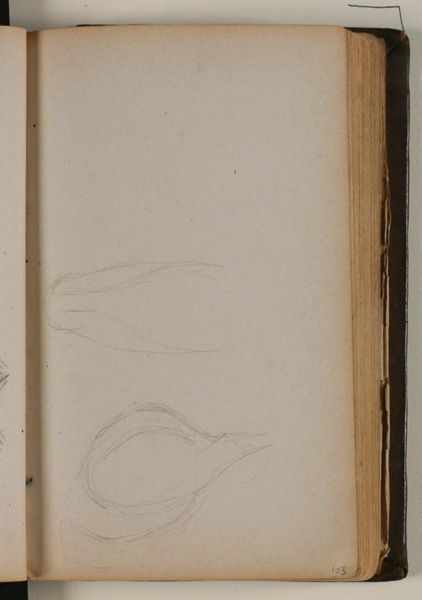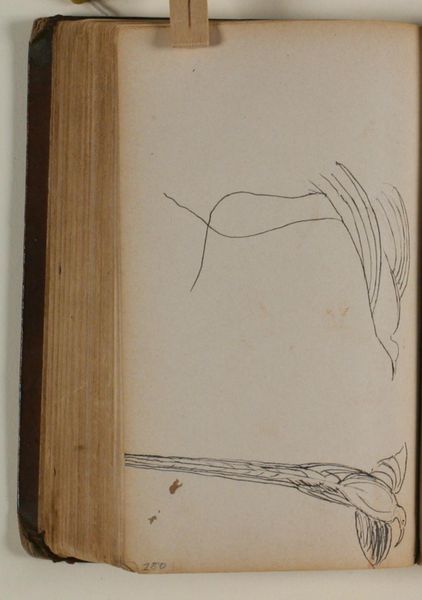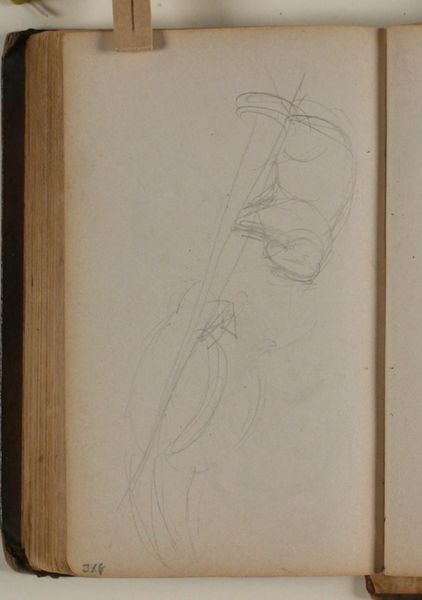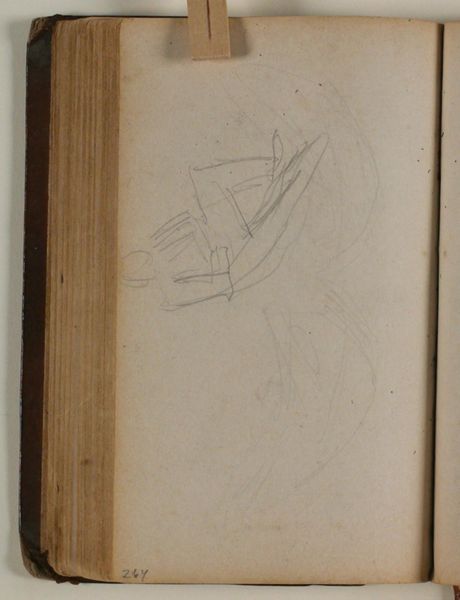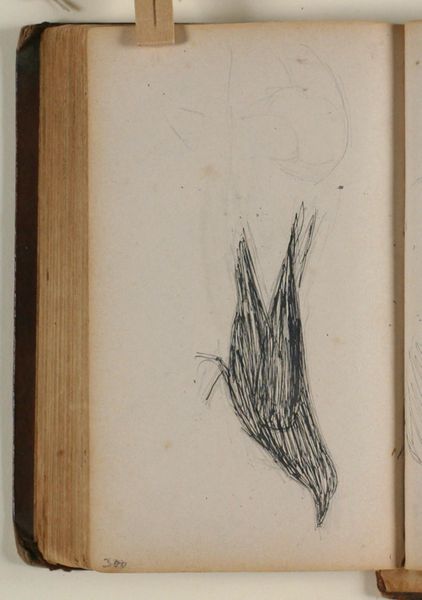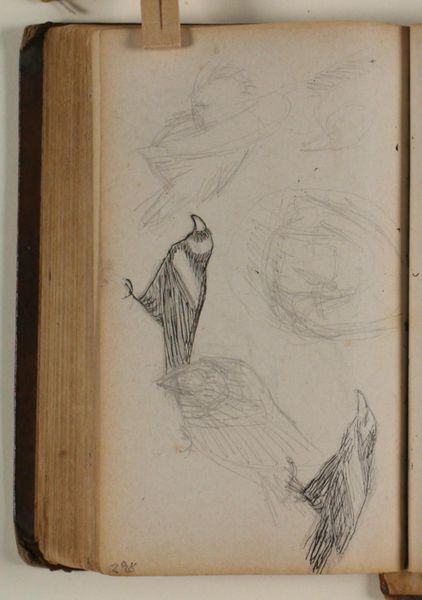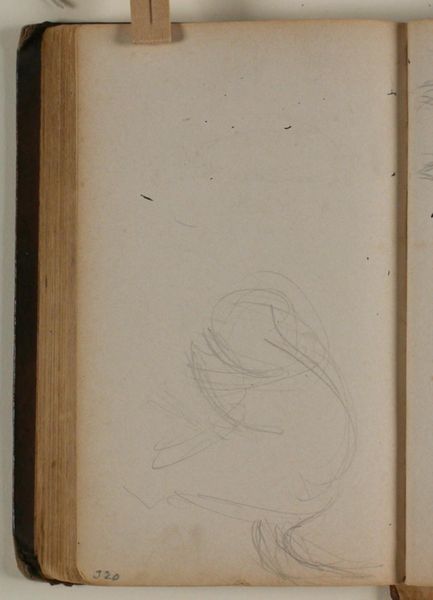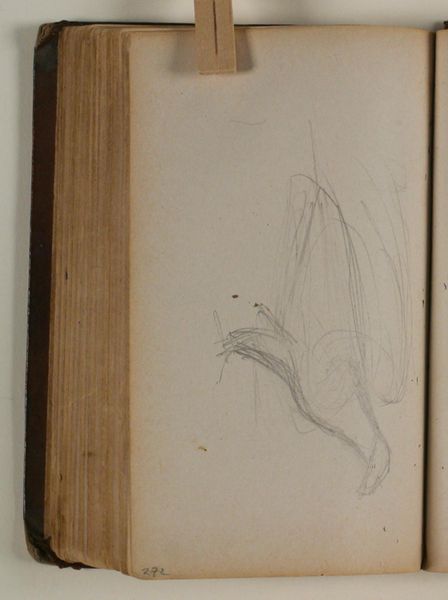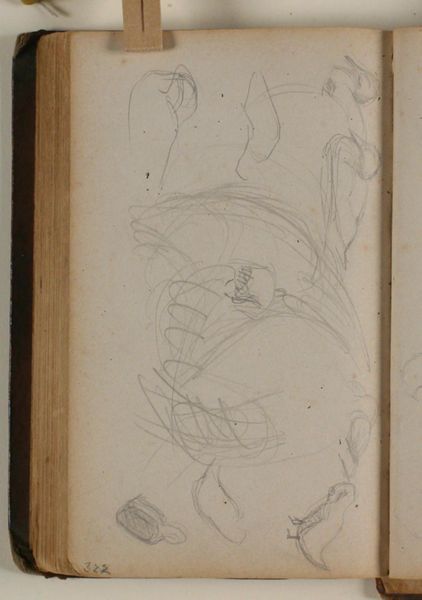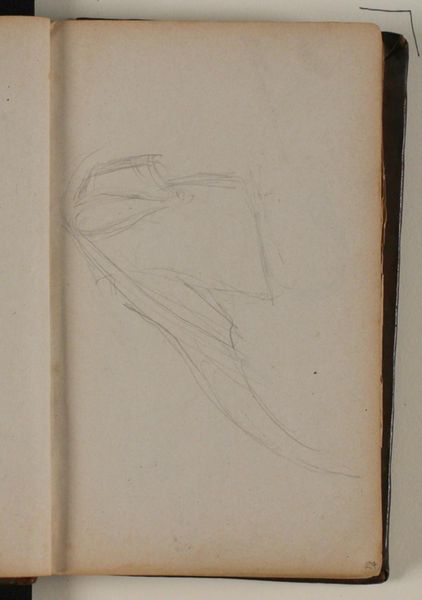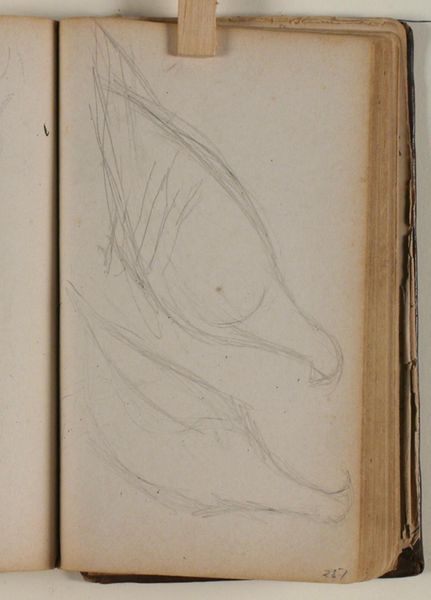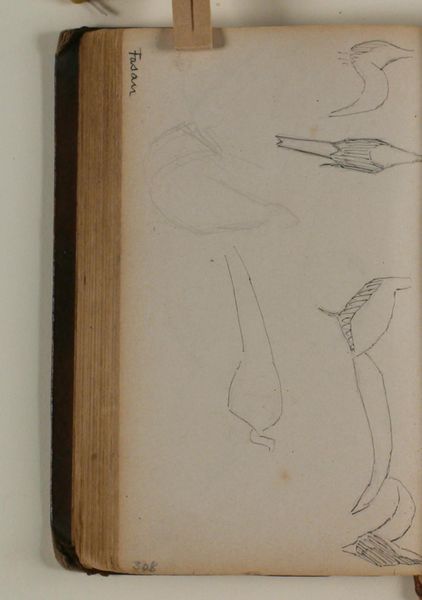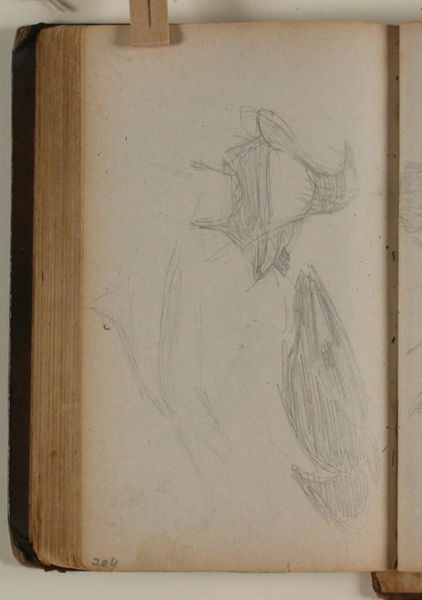
drawing, paper, pencil
#
drawing
#
figuration
#
paper
#
sketch
#
pencil
#
line
Curator: I’m immediately struck by the kinetic energy in this drawing. Despite the apparent simplicity, there’s a real sense of movement. Editor: Precisely. What we have here is "Studie af ørn," a study of an eagle rendered by Niels Larsen Stevns, active from 1864 to 1941. Executed in pencil on paper, the piece currently resides in the collection of the SMK, Statens Museum for Kunst. Curator: The linework, chaotic as it may appear at first glance, seems deliberately constructed to capture the dynamism of a bird in flight. The structural imprints reveal a distinct vocabulary. The sharp angles create an implicit sense of aggression, fitting for an eagle. Editor: It certainly invokes the powerful symbolism we associate with eagles—strength, freedom, vision. Eagles held different socio-political meanings across different periods and cultures in the nineteenth and early twentieth century; how might Stevns’ work fit within a specific national narrative in Denmark? Or in connection to Romanticism and depictions of raw nature at the time? Curator: From a purely formal perspective, it’s fascinating to see how the artist uses line to imply form and volume. There is such an interplay of positive and negative space to establish the subject within its pictorial space. Note also how the texture emerges via layering—one may want to see the materiality not just as medium-specific, but meaning-generative. Editor: Good points, this all demonstrates that the piece isn't merely a preliminary sketch, but holds artistic merit. How would viewers in different contexts historically have engaged with a work like this? Curator: Perhaps a sign of the burgeoning fascination with animal representation. It challenges the accepted aesthetic standards and introduces new, potentially more disruptive means of picturing non-human figures. Editor: And perhaps a tool to investigate national identity. Regardless, examining its visuality and its relation to culture provides interesting directions. Curator: Agreed. Both the texture and socio-historical place must have bearing on our perception.
Comments
No comments
Be the first to comment and join the conversation on the ultimate creative platform.
